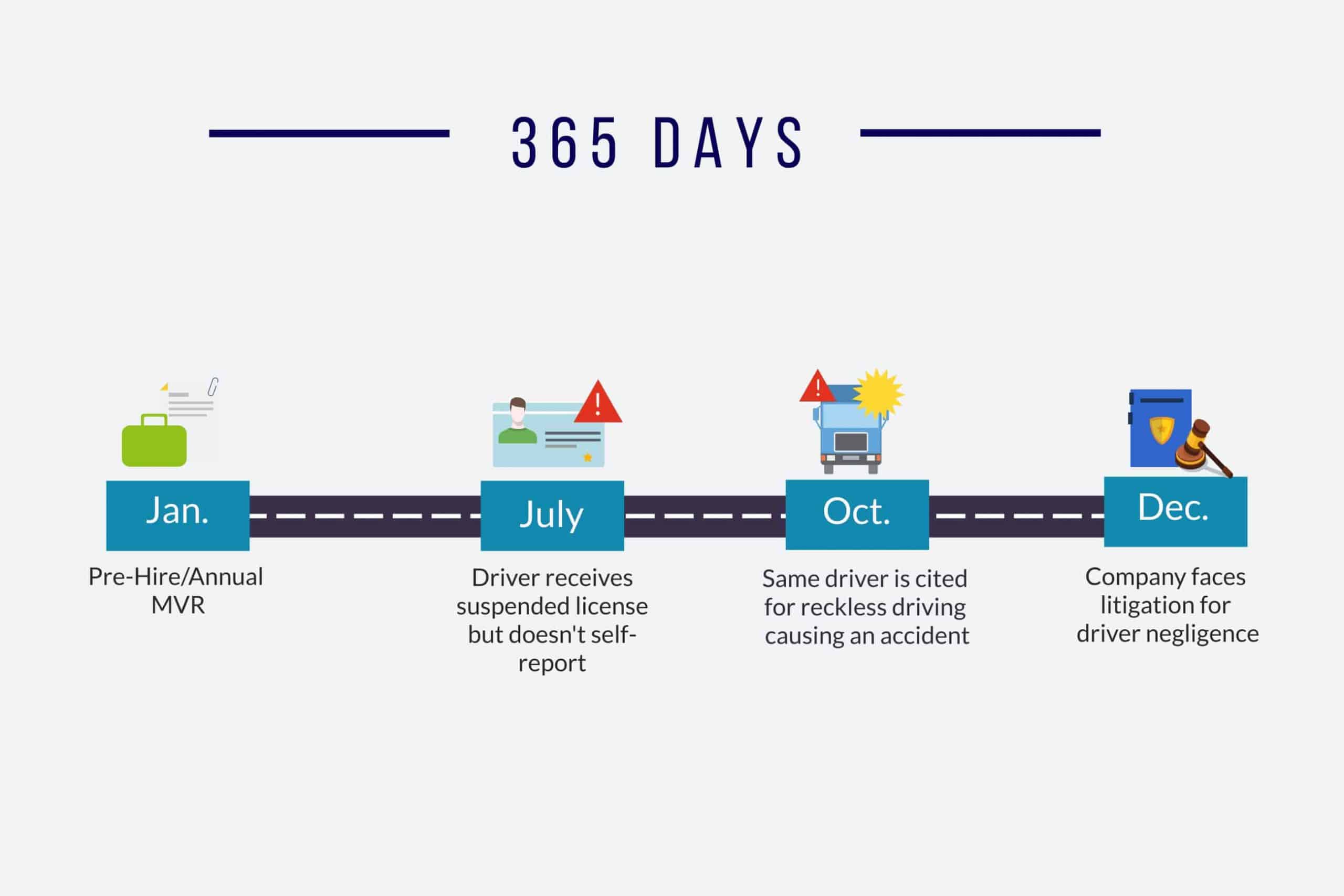What is the Annual MVR?

The Annual MVR refers to the Federal law that requires companies with commercial drivers (CDL) to check their Motor Vehicle Record (MVR) every 12 months. Carriers must review the driving records to ensure drivers meet minimum requirements for safe driving.
MVRs give employers insight into their employees driving profile. The report includes information about current license status, accident history and record of driving violations. Checking MVRs of all employees who drive as part of their job, whether required by law or not, is a smart business practice.
The Annual MVR: a lot can change in a year

If waiting for the annual MVR review to check MVRs again, there is a big gap of up to 11 months where license statuses may have changed. Sometimes this can happen and drivers luckily skate by undetected. However, the opposite can also happen. If fatalities or injuries are involved as a result, insurance costs and claims can be astronomical. A company’s brand and reputation may also suffer because of employing unfit drivers, even unknowingly.
How to Supplement the Annual MVR
Decreasing the gaps between MVR reports is always the goal. The shorter the gap between reports, the less risk. MVR monitoring closes the gap, by providing real-time alerts (daily, weekly, monthly) regarding negative license status changes or new convictions. This streamlines the driver record review process. It also helps companies keep risk and insurance liabilities low.
Key Takeaway
Annual MVRs are required for commercial drivers. However, that’s just one important step in an overall driver risk mitigation strategy. MVR monitoring closes the gap in reporting times, increasing safety and reducing risk for your company. Contact us for a free quote. You may be surprised to learn the cost may be less than what you think.
Want to learn more about MVR Monitoring vs. Annual MVRs? Download our Case Study or contact us to schedule a demo.
*We are not lawyers. Consult with your legal counsel to ensure your processes and procedures meet/ or exceed safety standards and compliance regulations. Please read our legal disclaimer.






